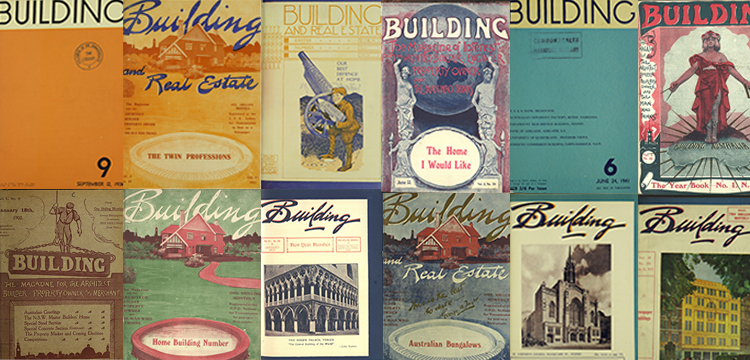
The house that Florence built

Until relatively recently the building game was seen as a man’s world, but women now making their mark in the industry should take inspiration from Florence Taylor, Australia’s first female architect and longstanding editor of the pioneering Building magazine.
Newly digitised in Trove as part of the State Library of NSW’s State Government funded Digital Excellence Program, Building was billed as the ‘magazine for the man (& woman) who thinks’ when it launched in 1907. The magazine’s husband and wife team of George Taylor (1872-1928), a trained builder, and Florence (1879-1969) insisted on giving all members of the building community full recognition for their work.

Before the first issue was published in Sydney in September 1907, the contribution of the architect, builder or merchant to the construction of a building rarely rated a mention in the press. But the editors clearly stated the journal’s intention:
To record their doings, study their requirements, watch legislative and other movements that may affect their interests, lay before them the cream of the world’s research in their various lines, and study for them fluctuations in property and building materials.
They promised their readers impartiality, declaring that ‘no puffing will be found in its reading matter’.
Together through their company, Building Publications Co., they developed a successful stable of industry publications, spearheaded by Building: The Magazine for the Architect, Builder, Property Owner and Merchant (1907–1972). It offers a wealth of information about 20th century construction. With Florence writing a regular column highlighting women in architecture, the Taylors upheld the philosophy of ‘The New Journalism’ — not only to ‘write’ things, but to ‘do’ things.They promised to keep readers informed about improvements in local and international construction methods, fostering modernism in architecture and promoting town planning ideas.

Within 12 months of its launch Building was proclaimed as ‘the high watermark of Australian magazines’. In 1927, Building became the journal of the Federated Master Builders’ Association of Australia (later the Master Builders’ Federation of Australia), the nation’s oldest industry association. That year the Taylors purchased premises in Loftus Street, facing the obelisk in Macquarie Place. Initially occupying two of the three floors, by 1939 the Building Publishing Co. had taken over the whole building with a full complement of staff and a printing plant.
Following her husband’s death in 1928, Florence took over as editor, a position she occupied until her retirement in 1961. Florence kept the magazine in production during the Depression, which brought the building trade to a standstill, and continued its high standard of publication through the war years.
Writing for the magazine’s 35th birthday issue in September 1942, Florence noted that many architects and builders had kept all of the 429 issues produced since its inception. If planning alterations to existing buildings, Building was the reference they took from the shelf when they wished to see the original state of any building constructed in the past 35 years.

Building continued to offer ‘influential commentary on the built environment in Australia’ into the 1970s. Cycling through a series of title changes, it was finally absorbed by Construction in 1972. The State Library of NSW partnered with the National Library of Australia to digitise Building and a number of other building and housing industry publications.
Building magazine from 1907 to 1942 is now available in Trove, as is:
and four newspapers:
- Construction : Weekly Supplement to Building (Sydney, NSW: 1909-1913),
- Construction and Local Government Journal (Sydney, NSW: 1913-1930),
- Construction and Real Estate Journal (Sydney, NSW: 1930-1938),
- Construction (Sydney, NSW : 1938-1954).
Interested in partnering with us to digitise magazines and make them accessible via Trove? See our Digitisation services page.
Margot Riley is the Curator, Research & Discovery, at the State Library of NSW.
This blog was first published on the National Library's Trove blog site in June 2017.